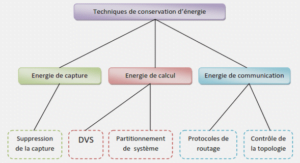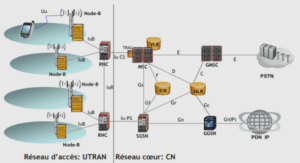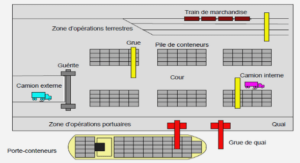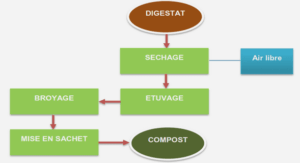Interaction with some African professional footballers-‘giving back’
This thesis was born out of an experiential experience with former and current Ghanaian professional footballers. I had always wanted to understand how these African footballers manage their football resources during and after their professional career. In 2009, I met Anthony Baffoe, a former Ghanaian international and now, the Secretary General of Professional footballers Association of Ghana (PFAG) through my international networks. Anthony introduced his idea of forming this PFAG and realised that with my sports background from the FIFA MASTER programme, and as a former semi-professional player, I can be of good support to this project. Based on his extensive briefing, I opted to support as a volunteer and got appointed as the General Administrator/ coordinator of the players union which was inaugurated in December 2009. My reasons for supporting the union were to;
a) contribute towards achieving the member status of FIFpro and
b) have answers to my curiosity on how the professional footballers manage their football resources.
During my two years stay at the PFAG, I met a lot of other African professional footballers through the various meetings and events of the union established contacts with some of them. Through my interaction with them, I conceived the idea of why not put together some documents which can help the young talents to learn from their experiences and the same time, finding answers to my mind boring questions. At the same time, their experiences can prepare the youths sufficiently for a better future transition, after professional football career abroad.
The Give Back Phenomenon (GBP)
As mentioned, many African footballers have identified limited opportunities at home as one of the barriers to their professional dreams and therefore migrating abroad can provide an avenue for them to achieve a professional footballer status. Not only achieving that but also provides them with substantial economic incomes which some can be remitted to support activities of the families, community and the society at large in their countries of origin. Darby (2014) argues that optimists view the migration of African footballers to elite leagues abroad as an opportunity to provide them with a sort of exposure and earnings that not only contribute to the development of football but also allow the individuals to escape poverty and act transnationally in ways that potentially facilitate ‘development’ at home.
Others may disagree but this study moves beyond to identify African players’ economic actions for supporting families and households with their earnings in the communities of origin by giving something back in return for their contributions towards their professional football career.
A typical example of the ‘GBP’ is examined from the perspective of one the best football academy in Africa. Right To Dream (RTD) Academy is situated in the West of Africa, specifically, Ghana, and as part of their programmes in contributing to the community development instituted a scheme dubbed ‘giving back’ to Africa. This is a compulsory but nonenforceable contract which details how trainees and graduates will give back at the community and societal level in Ghana (Darby, 2013: 50). According to (Darby, 2013) the giving back scheme operates on ‘credit’ accumulation from football and educational activities and also for involvement in community projects, foundations, and entrepreneurial activities in the African context, long-term employment in an African company and elected representation of politics.
THE EUROPEAN FOOBALL IS A SPECIFIC LABOUR MARKET
Football in Europe tends to dominate the football worldwide. This is due to the convergence of many structural factors (economic, sociological and footballistical). Indeed, in the European context is very attractive in terms of economic, quality of life and political stability, and marketability. In comparison with African context, there is a big gap concerning the game’s increasing popularity, quality of international talents, and attractiveness of leagues, economic, level of play, mediatisation as well as commercialisation aspects. These factors according to some scholars can facilitate movement of other international talents to their leagues which may provide a one directional perspective of athletics mobility (Agergaard and Tiesler, 2014). While others defined them as the push or pull factors that support mobility of football players to Europe (Lanfranchi and Talyor, 2001). The evolution of European football has really positioned itself ahead of many places and competitions because of the leagues’ ability to absorb nationals from all the other continents.
The European football competitions and leagues have become a product that makes it more important in keeping the uncertainty of the game’s outcome (see Markus Lang, 2013). This shows the uniqueness of European football market in the sport industry. Beyond that, football, as a professional sport provides a, means to understand the behaviours of the labour market in Europe. Sloane (1971) distinguished the European model of sport from the North American model and further challenged that the league rather than individual clubs is the relevant ‘firm’ (decision making unit). For instance, the management of the English premiership has structured and positioned their leagues in a manner that it has attracted foreign investors to become owners and/or shareholders of some clubs. Demonstrating huge capital investments in their leagues as well as appealing to global viewership, which can make their leagues, to be seen as one of the best in the world.
European leagues and competitions can serve as a marketing strategy for clubs and
federations to attract foreign supporters and sponsors globally. It again provides a two-way benefit for the donor and host countries when migrated talents become successful. On another side, it can have negative effects for both donor and host countries as well (Maguire et al, 2002:37). Since 1995 the major five European championships (English, Spanish, German, Italian and French) have dominated as the host to the majority of the international players (Poli et al, 2016). This is nothing new as their leagues are structured, competitive together with its professionalism status, and other social and economic potentials. By that makes the percentage of migrant football players’ in teams too often increase each year (Poli, Ravenel and Besson, 2016). To the extent that some clubs within the distance of 100km along borders or regions recruit talented minors to recoup returns on investment after resale of their playing rights in future transfers. However, the section interest is to understand the European football labour market and how it has benefitted individual African footballer and clubs in their transactions.
The evolution of football dated far back in the 1950s with the debates on the subject. Football, contemporary is the one number global sport concerning its audiences and commercialisation across all the continents. This has made European football to gain popularity together with its associated economic earnings and quality of international players plying their trade in the leagues. Additionally, sport, in general, has metamorphosed particularly football into a different level of its own. In the early 1990s saw the total improvement in the game when FIFA together with its confederations strategised to establish a strong relationship with media industry as partners. Sudgen and Tomlinson (1998) argue the prominent role of FIFA and UEFA in the marketing of the sport with their tournaments such as the FIFA World Cup and the UEFA Champions league that attract global viewership not only because of its quality but also the blend of international players.
|
Table des matières
GENERAL INTRODUCTION
i) Background
ii) The Give Back Phenomenon (GBP)
iii) Objectives
iv) Research questions
v) Organisation of the thesis manuscript
CHAPTER 1: GENERAL CONTEXT
1.1 THE EUROPEAN FOOBALL IS A SPECIFIC LABOUR MARKET: Incentives and Dynamics
1.2 SITUATION AND EVOLUTION OF AFRICAN FOOTBALL
1.3 GENERAL VIEWS ON THE CONCEPT OF MIGRATION
1.4 AFRICAN MIGRATION: Description and Analysis
1.4.1 Transnationalism: General views and definitions
1.4.2 Mobility and the new market of football in Europe
1.5 DEFINITIONS OF FOOTBALLERS MIGRATION
1.6 MIGRATION OF AFRICAN FOOTBALL PLAYERS TO EUROPE
1.7 AFRICAN FOOTBALLERS WAGES IN EUROPEAN LEAGUES
1.8 TYPOLOGIES OF FOOTBALL MIGRANTS
CHAPTER 2: THEORETICAL MODEL
2.1 A BRIEF ANALYSIS OF ECONOMIC SOCIOLOGY
2.1.1 CONCEPT OF SOCIAL RATIONALITY IN ECONOMIC SOCIOLOGY
2.2 CONTRIBUTIONS OF THEORETICAL MODELS
2.2.1 APPLICATION OF ECONOMIC SOCIOLOGY
2.2.2 ECONOMIC BEHAVIOUR AS A SOCIAL ACTION
2.3 EXPLANATION OF THE THEORETICAL MODELS
2.3.1 ECONOMIC APPROACH: Human capital theory
2.3.2 SOCIOLOGICAL APPROACH: Social embeddedness theory
2.3.3 CULTURAL APPROACH: Cultural embeddedness
2.3.4 SOCIO-ECONOMIC APPROACH: Institutionalised networks in social context
2.4 MAX WEBER’S THEORY AND ITS APPROACH IN TERMS OF METHODOLOGY
2.5 MODEL OF ANALYSIS OF THE GIVE BACK PHENOMENON
CHAPTER 3: RESEARCH METHODOLOGY
3.1 SOURCES AND METHODS
3.2 STATISTICS: Descriptive analysis
3.3 ANALYSIS GRID
3.4 INTERVIEWS
3.5 ORGANISATION OF AFRICAN COUNTRIES WITH ECONOMIC AND TRADING
UNIONS
3.6 MERITS AND DEMERITS OF THE METHODOLOGICAL APPROACHES
3.6 SOCIAL BACKGROUND OF AFRICAN FOOTBALLERS INTERVIEWED
GENERAL CONCLUSION
![]() Télécharger le rapport complet
Télécharger le rapport complet






